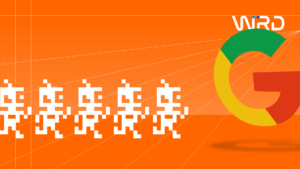We often come across prospective clients who have just had a new website designed and are consequently looking for some digital marketing consultancy to get the best of their new investment, or, otherwise, are looking for our support in recovering any search engine traffic lost as a result of the web designers not taking SEO into account in the development and launch process.
There are frequently elements of a website build process that many businesses do not consider, however, the benefits of including your SEO consultant in the website design process early on are undeniable.
It is a web designer’s job to build your beautiful new website, but it is an SEO’s job to ensure that that website is, at a fundamental level, SEO friendly.
In this blog, we will be sharing some of the many ways in which working closely with both an SEO consultant and a web designer/developer whilst planning your new website could improve your digital presence and rankings further down the line.
What is SEO?
Whilst many people are aware of the practice, for others, SEO (Search Engine Optimisation) can seem a daunting prospect.

Put simply, SEO is a digital marketing strategy that focuses on growing a website’s presence in search engine results pages like Google or Bing by improving the website’s rankings for relevant search terms.
SEO, therefore, helps users who may be searching for the product, service, or information you provide, to find your website when using such search engines. There are also other ways in which to utilise SEO to attract users who may be higher up the sales funnel, but the principle remains the same.
There are hundreds of elements that help search engines to decide where a website ranks in their results pages, a number of these such factors revolve around user experience and technical aspects of a website and this, of course, is where web design comes in.
It is important to note that a number of the SEO web design points below will overlap, this is because a technically sound website will almost always perform better from a user experience and search engine perspective than one that is encountering issues.
For example, if a page is particularly slow, whilst it is a technical issue that is likely causing it, it will also impact negatively on user experience and could mean that potential customers bounce off your website altogether. Slow page/site speeds will also have a negative impact on the search engine’s view of the page or site.
User Experience, SEO & Web Design
Mobile Usability
Google made mobile-friendliness a ranking factor back in 2015, and since then has continued to build on their mobile-focused algorithms until in 2017, they introduced mobile-first indexing.
The introduction of mobile-first indexing meant that Google began using the mobile version of websites as a base when evaluating, indexing, and ranking pages.
The result of this switch meant websites that were responsive to screen size and catered to mobile viewing began outperforming websites that did not.
Websites should be designed and built from a “mobile-first” perspective, with the desktop design elements based on that mobile foundation.
Whilst this may seem an incredibly basic requirement to some web designers, for others it is not completed as standard and this is where working hand-in-hand with an SEO who is experienced in CRO and usability can be of great help.
Website Speed
Page speed is another known Google ranking signal, and therefore, if yours is lacking, you could well find yourself outranked by a competitor.
Having a visual website can be great for engaging users, however, occasionally, this can come at the cost of website speed and consequently, usability.
When working with an SEO in the web design process, an experienced consultant can advise you as to areas that could potentially slow the site and provide tangible recommendations as to how these problems could be avoided.
Site Navigation & Architecture
Having a website that users are able to navigate quickly and easily to reach the information they require is pivotal to providing a fantastic user experience.
Search engines will also value pages that are closer to the home page, in terms of the number of clicks required to reach them (low click depth), above pages where users have to make multiple clicks to reach that particular page (high click depth). Because of this, it is vital that in the SEO web design phase, your consultant works with the designer to produce an architecture that is both user friendly and strategic from an SEO perspective.
Many web designers also like to streamline the way in which users move through the website and consequently end up significantly reducing the number of pages present on a website, sometimes to the point of having just one or two pages present.
Whilst this can, in some circumstances seem to be a great idea from the offset, condensing content down to this extent can be extremely detrimental to your website’s ranking potential.
The reason for this being that when a website has multiple pages, you are able to speak about and target certain topics on specific pages, improving that page’s ability to rank in search engines for the desired search terms.
When you remove these pages, you also remove your ability to target specific search terms or keyword themes on these pages, which can have huge knock on effects on your search rankings and website traffic.
Technical SEO & Web Design
Indexability
In order for search engines to crawl your website, they must be able to read the content that sits within it.
For this to be possible, the main body of your content must be text-based. This means, unfortunately, plans of heavy video or image-based websites can sometimes be scuppered.
Of course, images and videos are able to be optimised too through the likes of image alt tags and Schema, and we want the website to be engaging, but finding the right balance of visual vs. plain text content is the key to an SEO friendly web design.
Heading Tags
Heading tags are indicative to search engines as to what a page is about and are also used to signpost content to users. In an ideal world, your H1 tag should be seen as your page’s headline, ideally, include your target keywords and summarise what is in the text that follows.
Designers often view header tags as design features and use them dependant on the look and feel they are striving for, or, in other cases, use no header tags at all, instead opting for visual banners with text within the image.
This again, is somewhere that SEO web design comes in, understanding which code elements of a site have a bearing on the search engines and ensuring that these are taken into account.
Canonical URLs
Canonicals put simply are ways of informing search engines that one specific URL represents the master (or original) copy of a page.
This prevents problems caused by duplicate content that could occur should the same content appear elsewhere on the internet or your own website. Duplicate content can cause problems in terms of which pages rank in search engines, and which pages get excluded from the results pages, so using canonicals correctly is critical to the performance of your site in search.
Now, whilst it is best practice for pages to self-canonical, there are exceptions to this rule, and this is something your SEO consultant can advise you on.
Whilst most CMS systems automatically self-canonical, some off-the shelf CMS systems and bespoke platforms do not.
Working closely with an SEO within your SEO friendly web design process can be of huge merit here, allowing the site to be published with accurate canonical tags that will not risk, or inhibit your website’s ranking potential.
SEO Web Design at Launch
With more than 90% of traffic going to page one of search results, losing valuable rankings you may previously have had during launch can be fatal to online revenue.
If you already have a website which has grown in authority and visibility over time, it can be even more detrimental to launch your new website without first consulting an experienced SEO.
From redirecting the old pages to new replacement pages accurately, to ensuring Google Analytics tracking is working, conversion goals are recording, search engine index tags are correct and everything else required has been correctly implemented, having this consultancy early on in the launch process is essential.
Without these, you could lose valuable search rankings, traffic and authority as well as not being able to accurately measure the success of your launch.
SEO Web Design Summary
Whilst this is by no means an exhaustive list of the ways in which agency collaboration can benefit your site’s SEO, we hope this has provided you with some insight into how the two working hand in hand can boost your digital presence and prevent lost revenue.
From design to launch, having a team that proactively work together to produce the very best outcome is what all businesses should be aiming for.
Should you require SEO web design consultancy, or any other digital marketing services, please do not hesitate to get in touch with a member of our team who will be more than happy to provide you with a free, no-obligation quote.



